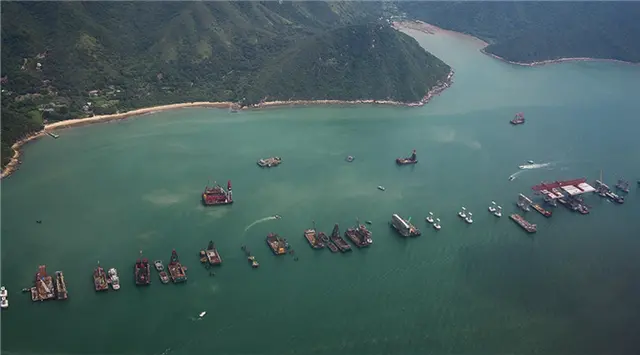The controversial Hong Kong-Zhuhai-Macau bridge may face troubled waters again as the landing point of an artificial island that will house the bridge’s facilities has drifted by up to 2.9 metres.
The Highways Department admitted on Tuesday night that the landing point at the northwest corner of the island had moved from 1 to 2.9 metres but insisted it still aimed to complete the subsea tunnel linking it to Tuen Mun by the end of 2018. Journalist Howard Winn said the island drifted by 3.5 metres.
“After assessments, reclamation consultants believed the seawall’s condition was stable ... The Highways Department will continue to closely monitor the situation,” the department said in a statement, adding that tunnel contractors had started to conduct strengthening works at the seawall.
The problem, revealed in media reports this week, was the latest controversy to hit the massive bridge project. The artificial island of about 150 hectares in waters northeast of the airport had already moved up to seven metres last year. But the department insisted last September that such movements were normal in large-scale reclamation projects.
The non-dredging method adopted for the seawall construction, which is regarded as more environmentally friendly as it does not require the dredging and dumping of marine mud, was cited as the reason for the movements.
In a recent article on his website, Winn quoted engineers familiar with the matter as saying that tunnelling had stopped for a few months because of the new movement and that the tunnel had to be “realigned”.
Yet dismissing suggestions that tunnelling had been suspended, the department said that to prevent further delays it had decided to change the construction works design for a tunnel section of the south landing point, using a large tunnel boring machine to replace the original cut-and-cover tunnel technology.
“The Highways Department believes there is a sufficient contingency fund to handle the extra expenses,” it said.
The island is to house theHong Kong Boundary Crossing Facilitiesfor clearance of goods and passengers, a connection point of the Tuen Mun-Chek Lap Kok road link via the tunnel.
Last December the government delayed the completion deadline of the Hong Kong section by a year to the end of 2017. It cited construction difficulties including unstable supply of materials, labour shortage, and the slower-than-expected consolidation performance of reclamation works.
Amid growing scepticism about the bridge’s cost-effectiveness, lawmakers also approved an extra HK$5.4 billion in January for the project’s rising construction costs, pushing the total funding for the bridge’s local section to almost HK$35.9 billion, about HK$7 billion of which was for the artificial island.
(SCMP)
 简体中文
简体中文



